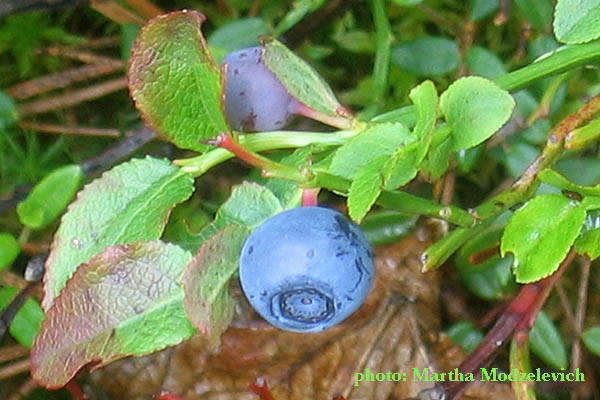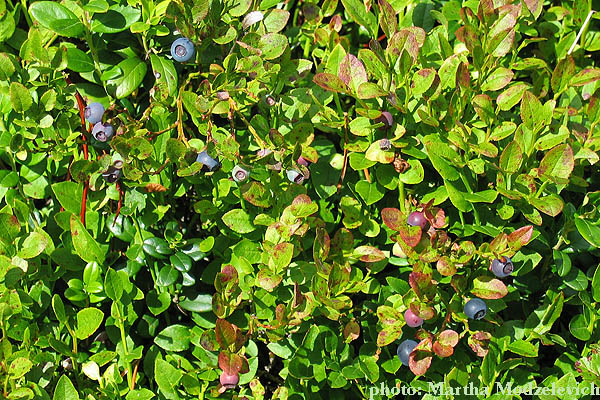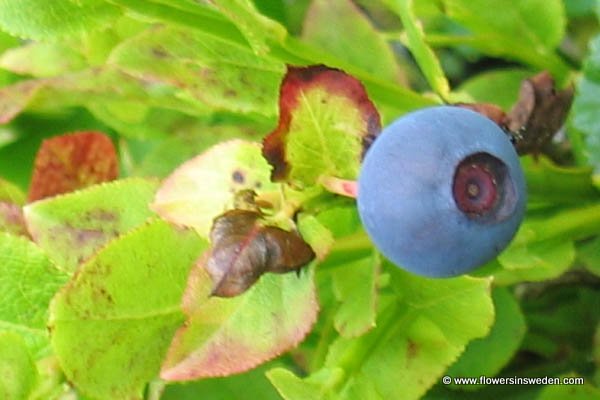
| Scientific name: | Vaccinium myrtillus L. | |
| Synonym name: | Vaccinium oreophilum Rydb. | |
| Swedish name: | Blåbär | |
| German name: | Blaubeere | |
| Nederlandse naam: | Blauwe bosbes | |
| English name: | Bilberry, Whortleberry | |
| Family: | Ericaceae, Heath family, Ljungväxter |

|
| Life form: | Perennial dwarf shrub; rhizomatous | |
| Stems: | Height 10–40 cm, erect, abundantly branched, woody, old stems round, brown, young stems bristly, green, glabrous | |
| Leaves: | alternate, entire, elliptical | |
| Flowers: | Bell-shaped reddish or pink flowers | |
| Flowering Period: | May, June | |
| Fruits: | Spherical, dark blue and wax-covered or black and shiny, occasionally off-white, inside dark red, juicy berry | |
| Habitat: | Forests, thickets, heath |

Derivation of the botanical name: Vaccinium, from an old name used in the works of Virgil (Publius Vergilius Maro, 70-19 BCE) and Pliny the Elder (Gaius Plinius Secundus, 23-79 CE). myrtillus refers to the resemblance of the leaves to those of myrtle.

|